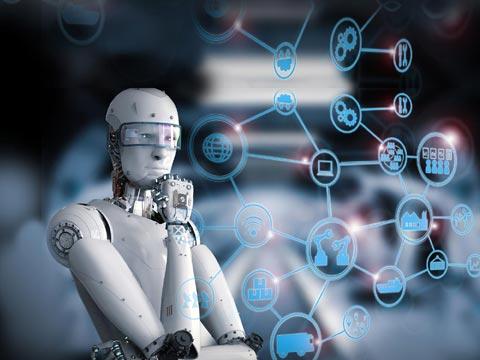Microlearning Revolution: Exploring the Future of Education Through Bite-Sized Learning
In an age where digital distractions abound and attention spans are shrinking, the way we learn is undergoing a transformative shift.Enter the microlearning revolution—a powerful new approach that leverages short, focused bursts of content to improve retention, engagement, and accessibility.From corporate training rooms to K-12 classrooms, microlearning is reshaping the future of education and redefining what it means to acquire knowledge in the 21st century.
What is Microlearning?
Microlearning refers to the process of delivering educational content in small, easily digestible chunks. These modules, typically lasting between 2–10 minutes, are designed to be accessed anytime, anywhere—providing ultimate versatility for learners. Whether it’s a brief tutorial, an interactive quiz, or a fast video lesson, microlearning capitalizes on our brain’s natural preference for manageable details doses.
Key Aspects of Microlearning:
- Bite-sized lessons: Short content modules that focus on a single objective or skill.
- Mobile-kind design: Accessible across devices, supporting learning on-the-go.
- Engaging formats: incorporates multimedia like videos, audio snippets, infographics, and gamified elements.
- Just-in-time learning: Empowers learners to access information precisely when needed.
- Personalized pathways: Enables adaptive learning journeys based on user performance.
The Benefits of Microlearning in Modern Education
Why is microlearning rapidly gaining momentum among educators and learners worldwide? Let’s explore the compelling benefits driving this educational revolution:
- Improved Knowledge Retention: Research shows that information presented in brief, focused bursts is more likely to be remembered. Microlearning supports spaced repetition and active recall, both of which are proven to enhance long-term retention.
- Boosted Engagement: By utilizing multimedia and interactive formats, microlearning taps into diverse learning styles and keeps students motivated.
- Time Efficiency: Busy professionals and multitasking students can integrate learning into their schedules without disruption, making ongoing education more accessible than ever.
- Lower Development Costs: Creating microlearning modules is often faster and less resource-intensive than developing traditional, lengthy courses, making it ideal for businesses and institutions alike.
- real-Time Application: Wiht just-in-time modules, learners can address immediate challenges, reinforcing knowledge through practical application.
- Scalable and Updatable: Content can be quickly refreshed to stay relevant, especially critical in fast-evolving industries like technology and healthcare.
How Microlearning is Transforming the Future of Education
The microlearning revolution is not just a trend—it’s a fundamental shift in educational design and delivery. Here are several ways microlearning is influencing the future of education:
1. Seamless Integration With Technology
From smartphones to smartwatches, learners can access microlearning content at their convenience. Learning management systems (LMS), mobile apps, and artificial intelligence integrate seamlessly to personalize learning paths, track progress, and deliver content proactively.
2. Supporting Lifelong Learning and Upskilling
In today’s fast-changing job market, continuous upskilling is essential. Microlearning makes reskilling easy and accessible, supporting personal and professional growth without requiring long-term course commitments.
3. Enhancing Classroom and Hybrid Learning
Teachers and instructors are increasingly using microlearning modules as complementary resources. These bite-sized lessons can reinforce in-class instruction, provide targeted remediation, and foster blended learning experiences.
4.Democratizing Access to Knowledge
Microlearning solutions are often more affordable and widely available, making quality education accessible to people nonetheless of geography, background, or socioeconomic status.
Case Studies: Real-World Success With Microlearning
Microlearning’s impact is evidenced by diverse success stories across education and industry:
Corporate Training at Google
- Google transformed its onboarding process by implementing microlearning modules. New hires now access just-in-time tutorials on tools, company culture, and processes, cutting onboarding time by 25% and improving retention rates significantly.
Skill Development at Duolingo
- The Duolingo language app employs short, gamified lessons that keep users engaged and motivated. The microlearning approach has helped millions acquire language skills at their own pace,boasting industry-leading retention rates.
E-Learning in Healthcare
- Healthcare professionals need to stay updated on protocols and best practices. Microlearning platforms deliver quick refreshers and critical updates, enabling real-time knowledge application that improves patient outcomes.
Practical Tips: Implementing microlearning for Educators and Businesses
Ready to embrace the microlearning revolution? Here are practical strategies to ensure triumphant implementation:
- Define Clear Objectives: Each module should have a specific, measurable learning goal.
- leverage Multimedia: Mix videos, audio, infographics, and interactive elements to cater to varied learning preferences.
- Promote Interactivity: Encourage participation through quizzes, polls, and reflection points.
- enable Mobile Access: Optimize content for delivery on smartphones and tablets.
- Encourage Continuous Feedback: Use analytics and user feedback to iterate and refine microlearning modules.
- Facilitate Social Learning: Integrate discussion forums and peer-to-peer collaboration to foster a sense of community.
Frist-Hand Experience: A learner’s Viewpoint
“As a busy working parent, I struggled to find time for professional development. Microlearning modules allowed me to fill pockets of free time—on a commute, during a lunch break, even waiting in line. Not only did I complete more training than ever before, but I found myself remembering and applying what I learned far more effectively!”
– Sara T., Marketing Executive
Challenges and Considerations With Microlearning
Despite its benefits, microlearning is not a one-size-fits-all solution. Consider these potential pitfalls:
- Lack of Depth: microlearning is best for focused, skill-based lessons. Complex, nuanced topics may require more complete exploration.
- Fragmented Experience: Without careful instructional design,fragmented modules can lead to a disjointed learning journey.
- Assessment difficulties: Evaluating learning outcomes across multiple micro-modules might potentially be challenging.
To mitigate these challenges, blend microlearning with traditional learning methods where appropriate and ensure each module fits into a coherent instructional strategy.
Conclusion: Embracing the Microlearning Revolution
The microlearning revolution is redefining the future of education. By offering accessible, engaging, and effective ways to learn, microlearning empowers students, professionals, and organizations to thrive in a rapidly changing world. Whether you’re an educator, learner, or employer, embracing this innovative approach can unlock new possibilities for growth and success.
Invest in quality microlearning initiatives today, and be at the forefront of the next wave in educational excellence.

